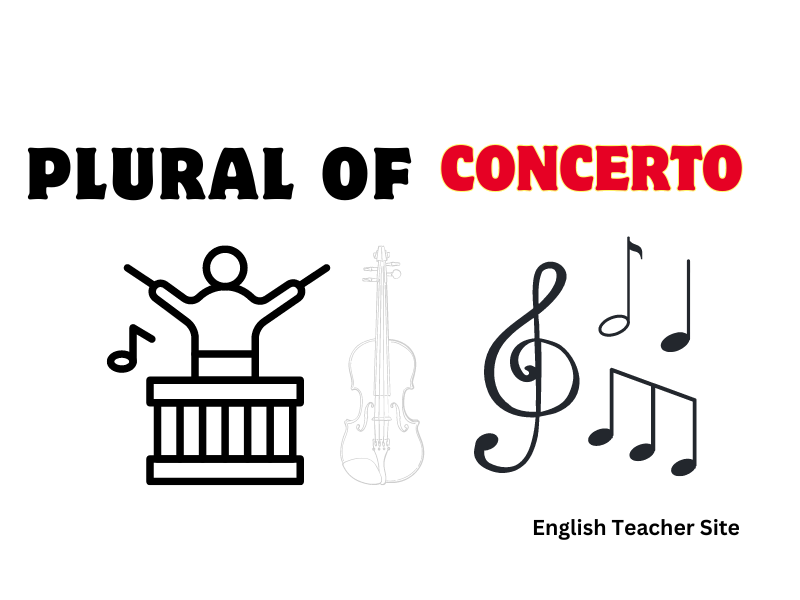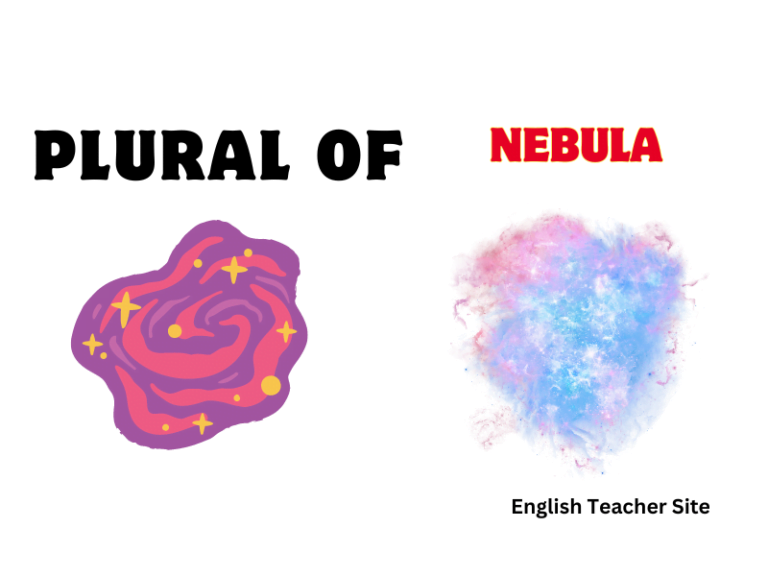What’s the Plural of Concerto: Understanding Musical Terms

- A concerto is a classical music composition for a solo instrument accompanied by an orchestra.
- “Concertos” and “concerti” are both correct plural forms of “concerto”.
- Usage of either plural form depends on context, with “concerti” reflecting the Italian origin.
The pluralization of Italian-derived nouns in English often follows the original language’s rule, leading to two acceptable plural forms. The acceptable plural forms of “concerto” are “concertos” and “concerti”. The former follows the regular English convention of adding an “s” or “es” to create plurals, while the latter adheres to the Italian grammar rules. Both plural forms are widely accepted and used, although “concerti” may be preferred in more formal contexts or to reflect the word’s Italian origin.
What’s the Plural of Concerto?
Interestingly, the plural of concerto can be formed in two different ways:
- Concertos
- Concerti
The use of either form depends on context and personal preference. However, “concertos” is more commonly used in English-speaking contexts.
| Preferred Plural Form | Context |
|---|---|
| Concertos | English-speaking contexts |
| Concerti | Following Italian tradition |
Examples of Usage:
- The composer’s complete concertos are being performed this season.
- A collection of Vivaldi’s concerti is available at the music library.
The origin of the word “concerto” stems from the Italian language, thus the Italian plural form “concerti.” However, the Anglicized “concertos” has become acceptable as the traditional Italian language influence on musical terminology has lessened in English.
| Origin Language | Plural Form | Usage Note |
|---|---|---|
| Italian | Concerti | Preferred when adhering to Italian musical traditions. |
| English | Concertos | More commonly used and recognized in English. |
Concerto: Singular or Plural?
Plural Form of Concerto:
| Italian Origin | English Adaptation |
|---|---|
| concerti | concertos |
Thus, “concerti” is the plural form following traditional Italian. However, “concertos” is the form that has been Anglicized and is also accepted in English-speaking contexts.
When to Use Each Form:
- Concerti: This form is often preferred when referring to a collection of classical pieces or when intending to maintain the Italianate flavor of the original term.
- Concertos: This term is widely used in English conversations and writings about music, aligning with standard English pluralization rules.
Usage Examples:
- The orchestra performed a series of Bach’s concerti throughout the festival.
- She has mastered several Mozart concertos, impressing her audiences each time.
Concerto: Definition and Meaning
A concerto is a classical music composition characterized by an intricate dialogue between a solo instrument or a group of solo instruments and an orchestra. Originating from the Italian word for “concert,” the term concerto implies a harmonious arrangement. It usually comprises three movements with contrasting tempos: fast, slow, and then fast again. This musical form allows soloists to exhibit their virtuosity while being supported and complemented by the full orchestra.
| Movement | Characteristics |
|---|---|
| First | Lively and fast |
| Second | Slow and lyrical |
| Third | Bright and brisk |
- Common solo instruments in concertos include:
- Violin
- Piano
- Flute
- Cello
The plural of concerto can be both concertos and concerti, with the latter being the Italian form._SCANCODE_HERE
| Singular | Plural (English) | Plural (Italian) |
|---|---|---|
| Concerto | Concertos | Concerti |
Nouns Only Used in the Plural Form
Examples of Nouns Used Only in the Plural Form
Often, nouns that are inherently plural in nature describe clothing, tools, or paired objects. These are a few examples:
- Scissors
- Pants
- Glasses (referring to eyewear)
Here is a brief table highlighting some of these nouns:
| Noun | Utilization |
|---|---|
| Goggles | Used for eye protection |
| Jeans | A type of clothing |
Characteristics of Plurale Tantum
Such nouns are known as plurale tantum, a Latin term meaning “plural only.” Interestingly, these nouns take a plural verb despite there being no singular version. For instance:
- The glasses are on the table.
- Her jeans are blue.
Distinction in Other Languages
Consider these nouns and their use in sentences:
- The shorts fit perfectly.
- The tweezers are precise for this task.
Examples of Concerto in Context
Let’s explore a few contexts in which the term can be applied:
Singular Use:
- The concert was headlined by Beethoven’s Piano Concerto No. 4.
- A cellist prepared to perform Elgar’s Cello Concerto in E minor.
Plural Use:
- The orchestra’s season features several concertos by various composers.
- She has mastered concertos from both the Baroque and Romantic periods.
In Sentences
| Sentence Example | Contextual Usage |
|---|---|
| Tchaikovsky’s Violin Concerto is a masterpiece. | Demonstrating the singular form. |
| Bach’s Brandenburg Concertos are widely beloved. | Presenting the plural form in a proper noun. |
Usage in Music Literature
- Critics praised the pianist’s interpretation of Chopin’s concertos.
- Recent publications detail the evolution of the violin concerto through history.
Examples of Concertos/Concerti in Context
Antonio Vivaldi famously composed “The Four Seasons” (Le quattro stagioni), which are four violin concerti, each giving musical expression to a season of the year:
| Season | Concerto Title |
|---|---|
| Spring | La primavera (Spring) |
| Summer | L’estate (Summer) |
| Autumn | L’autunno (Autumn) |
| Winter | L’inverno (Winter) |
Ludwig van Beethoven’s Piano Concerto No. 5 in E♭ major, Op. 73, known as the “Emperor Concerto,” is one of the composer’s most revered works. It showcases the dynamic interplay between soloist and orchestra, creating a powerful musical narrative.
Johannes Brahms has also contributed significantly to this genre with his two piano concerti:
- Piano Concerto No. 1 in D minor, Op. 15
- Piano Concerto No. 2 in B♭ major, Op. 83
In these works, Brahms explores the full expressive potential of the piano against the rich backdrop of the orchestra.
Origin of the Word Concerto
The term “concerto” has a rich historical tapestry woven into its usage within the realm of classical music. Concerto is derived from the Latin word ‘concertare’, which means “to contend, contest, or dispute”. This root accurately reflects the concerto’s nature where there is an interplay between the soloist and the ensemble. Italian musical terminology played a significant role in the naming of this musical form.
Etymology
In the Baroque period, the Italian word ‘concerto’ began to take on its musical significance. ‘Concerto’ encapsulates the concept of collaboration, to “arrange by agreement” or “bring into a relationship”. The essence of the word conveyed the harmonious opposition of sounds and orchestral arrangement.
Evolution to Musical Term
Over time, ‘concerto’ evolved to signify a specific musical composition involving a dialogue between one or more solo instruments and an orchestra. This divergence keeps the spirit of adversarial collaboration alive, depicting the dynamic contrast in sound and technique.
| Latin Origin | Italian Influence | Musical Usage |
|---|---|---|
| concertare | to strive together | Concerto |
| (plural concerti/concertos) |
The word’s journey, from its Latin roots to the Italian adaptation, all the way to its current application, illustrates a deep connection to the performative aspect of music, highlighting the ‘concerted’ effort of the instruments in creating a unified performance.
Sources
My name is Khamis Maiouf. I am the creator of the English Teacher Site, dedicated to providing valuable resources and insights for students around the world. With a passion for education and a commitment to helping students enhance their skills, I aim to make English teaching more effective and enjoyable for both educators and students.






